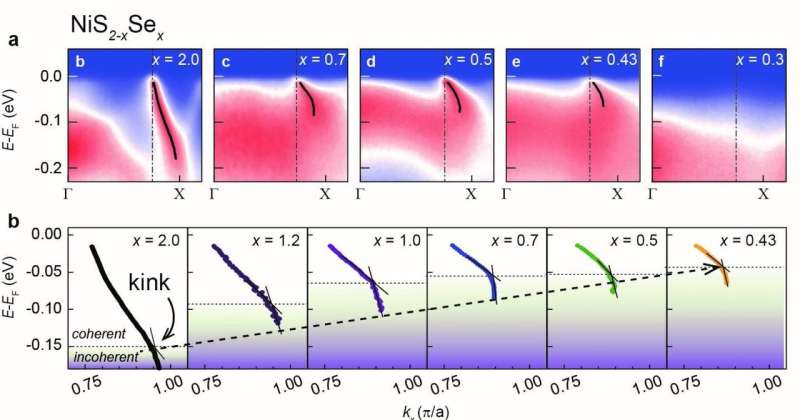Direct observation of coherence energy scale of Hund's metal

Strongly correlated systems are materials that exhibit strong interactions between electrons, a property unseen in ordinary conductors or insulators. Typical examples include metal-insulator transitions or unconventional high-temperature superconductivity where the resistance becomes zero at high temperatures.
There have been studies to explain this strong interaction between electrons and their characteristic energy scales, but no direct observation on such energy scales through theory or experiments has been reported. To this, the POSTECH-IBS joint research team has succeeded in directly observing the evolution of coherence energy scale of the Hund's metal in its electronic structure and as a result, clarifying the principle behind it.
The joint research team—consisting of Professor Ji Hoon Shim and Dr. Bo Gyu Jang of POSTECH's Department of Chemistry, and Professor Changyoung Kim and Dr. Garam Han of Center for Correlated Electron Systems at the Institute for Basic Science (IBS)—has discovered that the kink behavior of electronic band structure of NiS2-xSex, changes according to the degree of selenium (Se) doping. The researchers used angle-resolved photoemission spectroscopy (ARPES) to verify this. Using the first-principle calculation, they proved for the first time that this kink is due to the Hund's coupling and that it is linked to the characteristic coherence energy scale in matters. These research findings were recently published in Nature Communications.
Until now, the unique phenomenon that occurs in strongly correlated materials have been usually explained by the electron interactions in single-band model. However, most materials have multiband nature and this has limited understanding the Hund's coupling effect which should be taken into consideration.
The research team controlled the intensity of the interaction between electrons by controlling the selenium (Se) doping in NiS2-xSex, a Hund's metal. The researchers observed the evolution of kink behavior in the electronic structure at low temperatures and confirmed that this kink is directly related to the coherence temperature scale of the system, suppressed by the Hund's coupling.
This study suggests that the traditional picture studied based on a single-band model should be modified in multiband systems in which the Hund's coupling plays an important role. It is attracting attention in academic circles for its direct observation of a matter's characteristic energy scale through its electronic structure at low temperatures.
More information: Bo Gyu Jang et al, Direct observation of kink evolution due to Hund's coupling on approach to metal-insulator transition in NiS2−xSex, Nature Communications (2021). DOI: 10.1038/s41467-021-21460-5
Journal information: Nature Communications
Provided by Pohang University of Science & Technology (POSTECH)





















